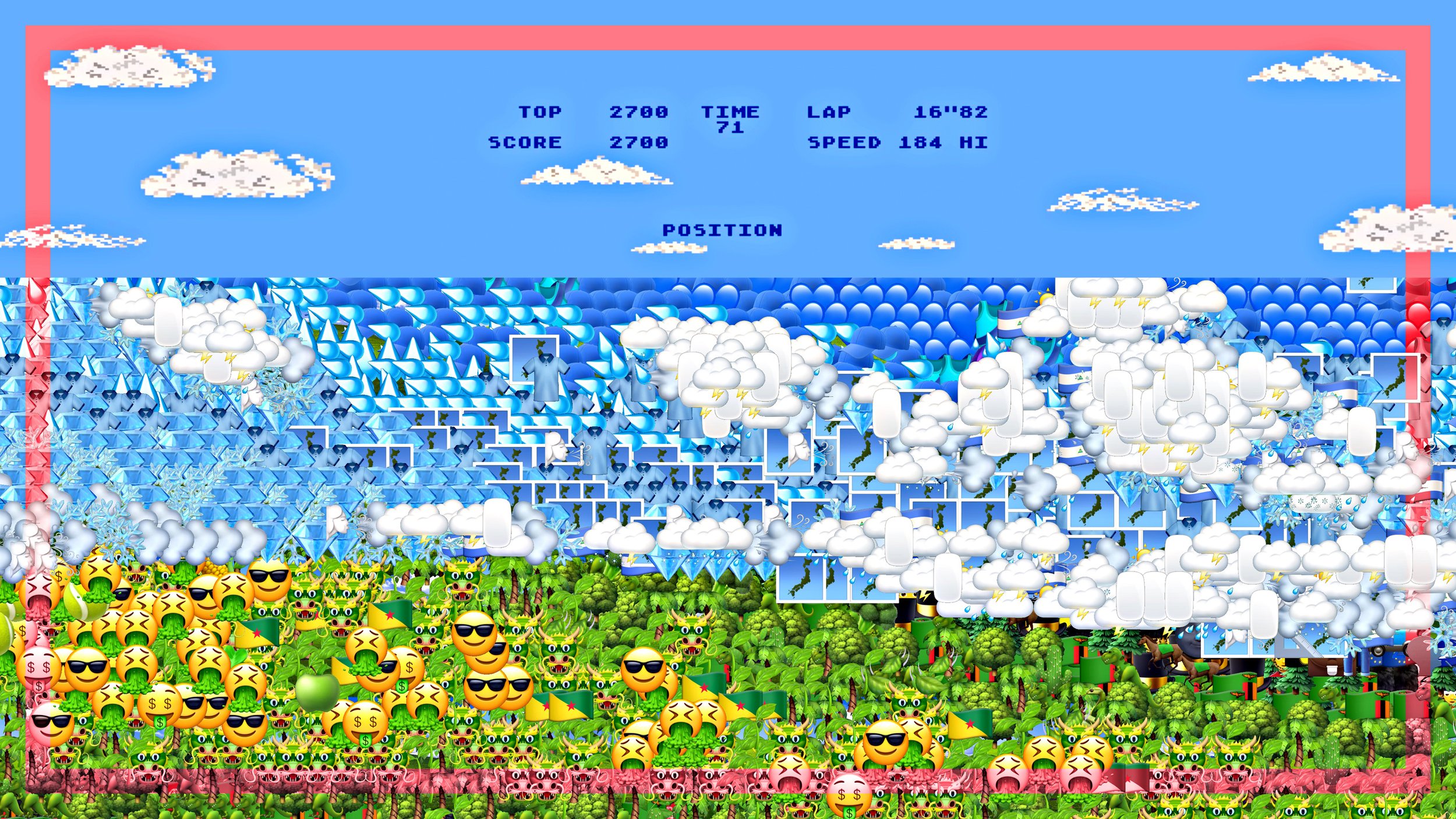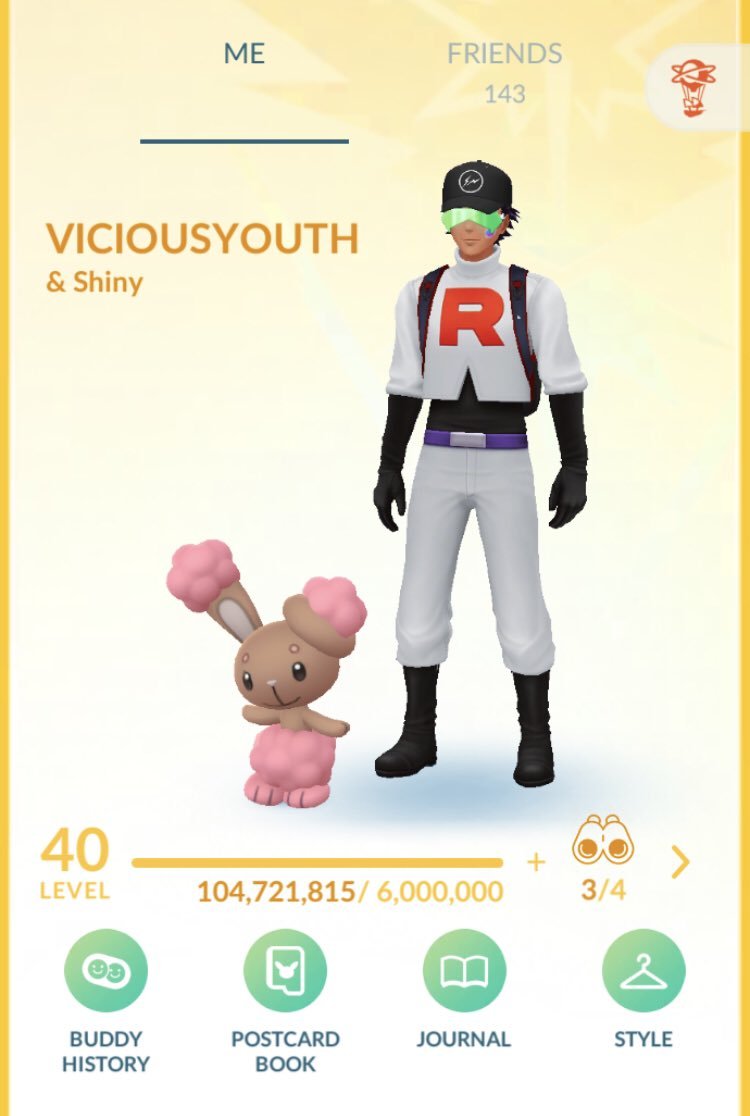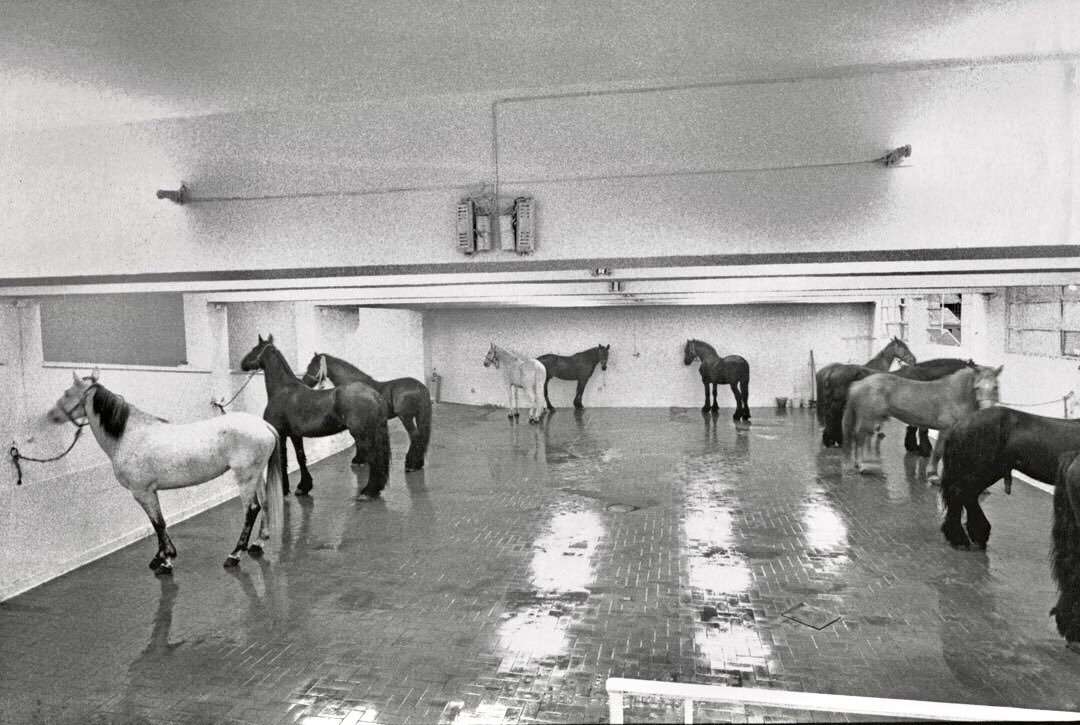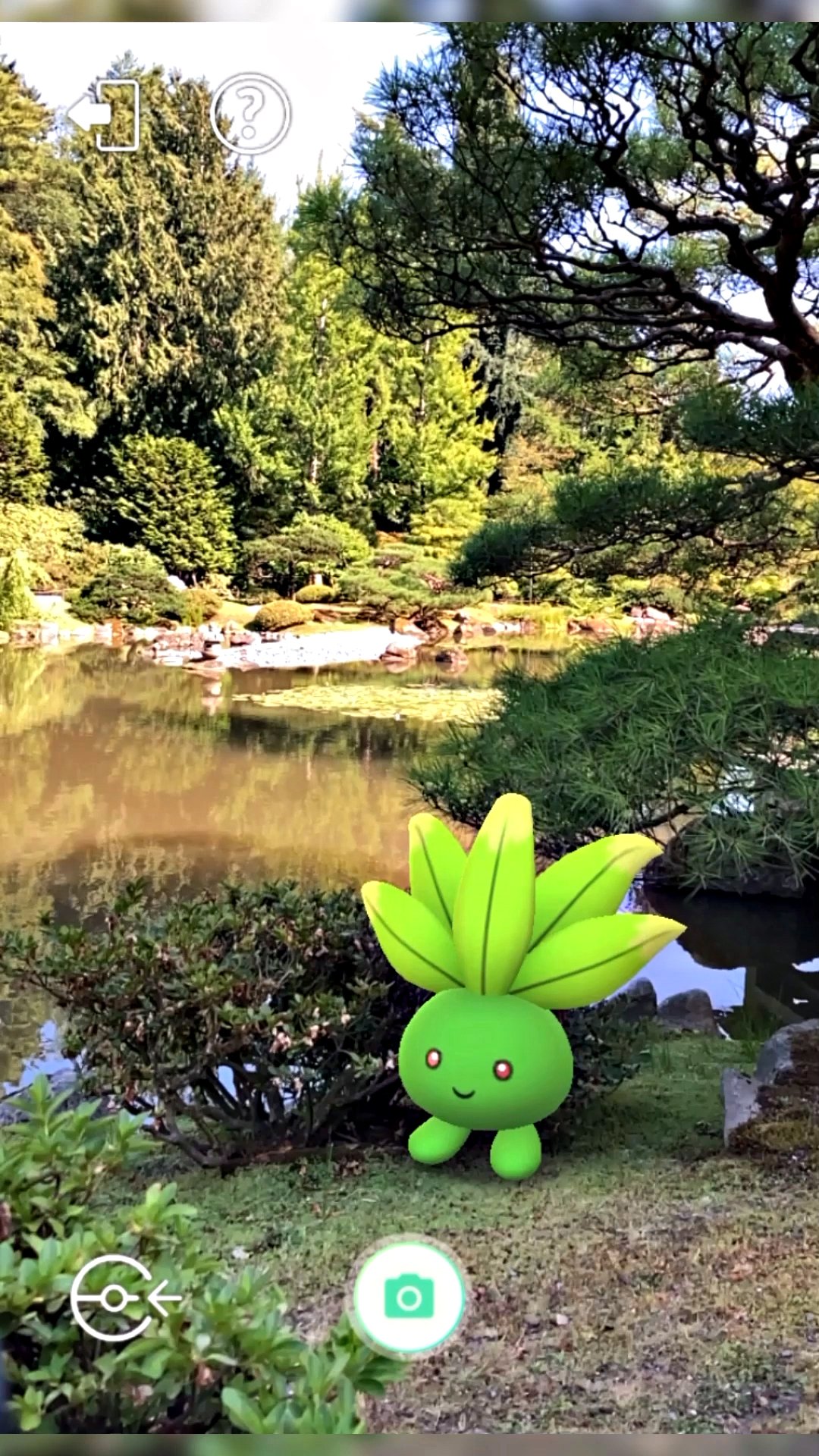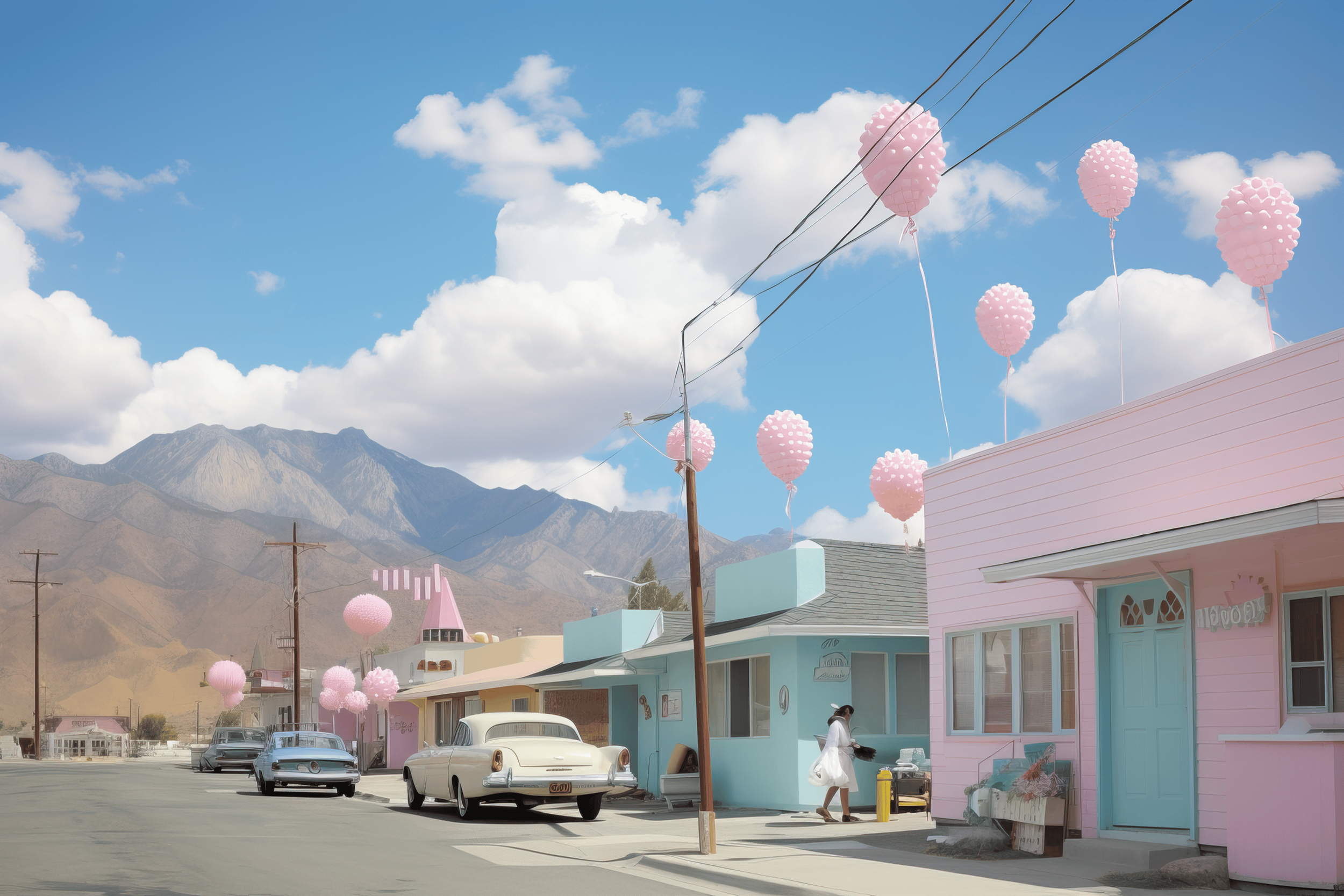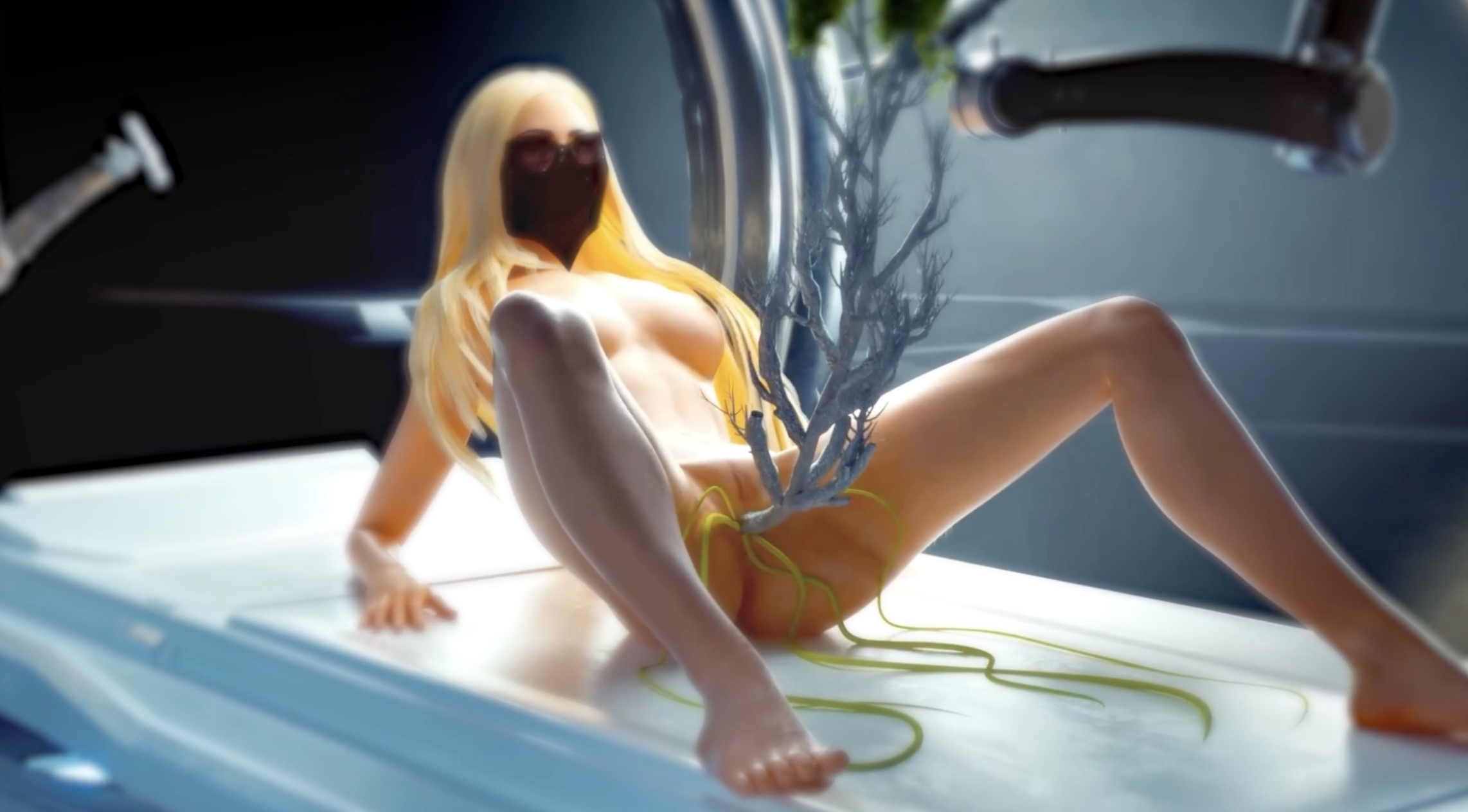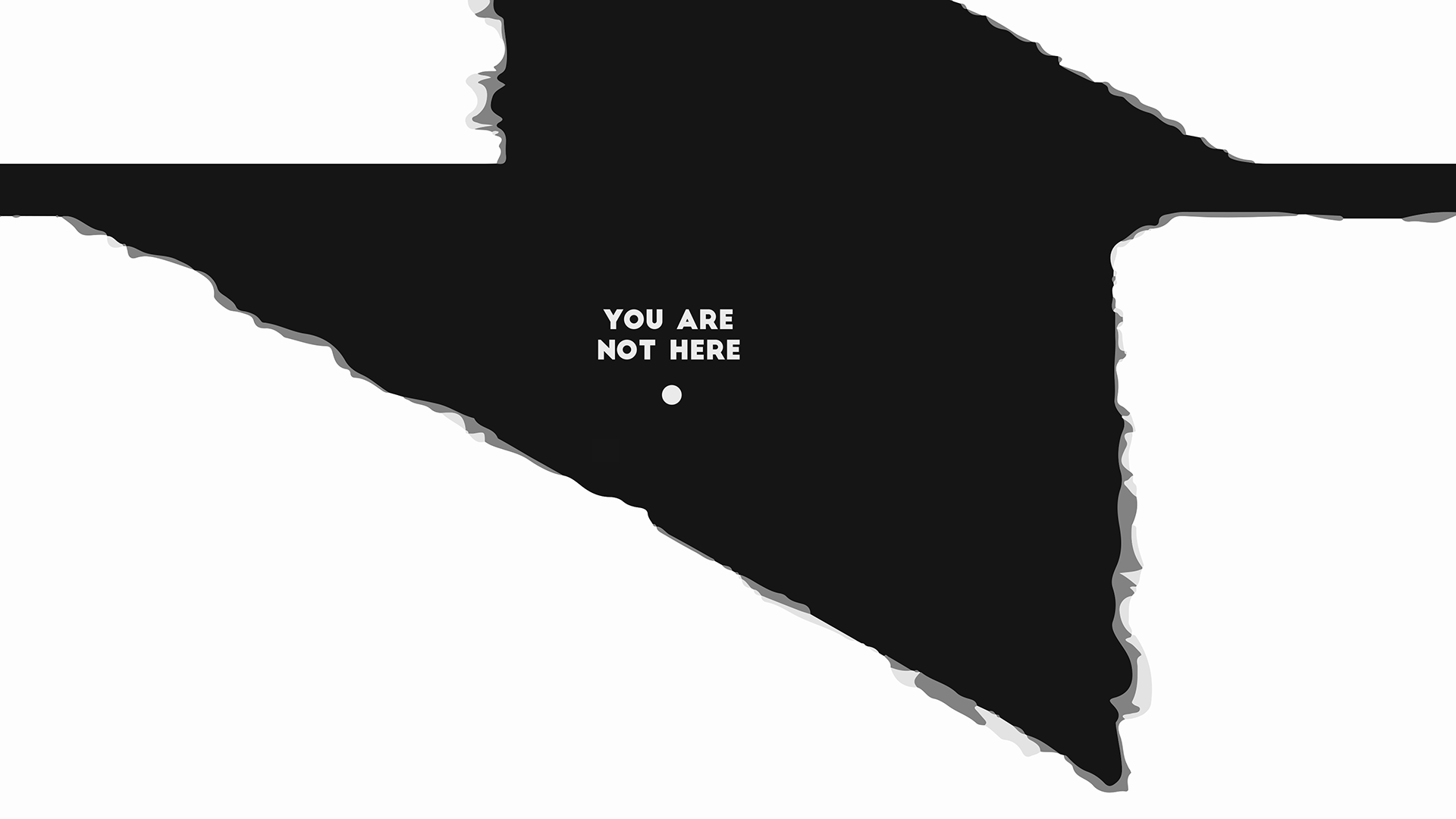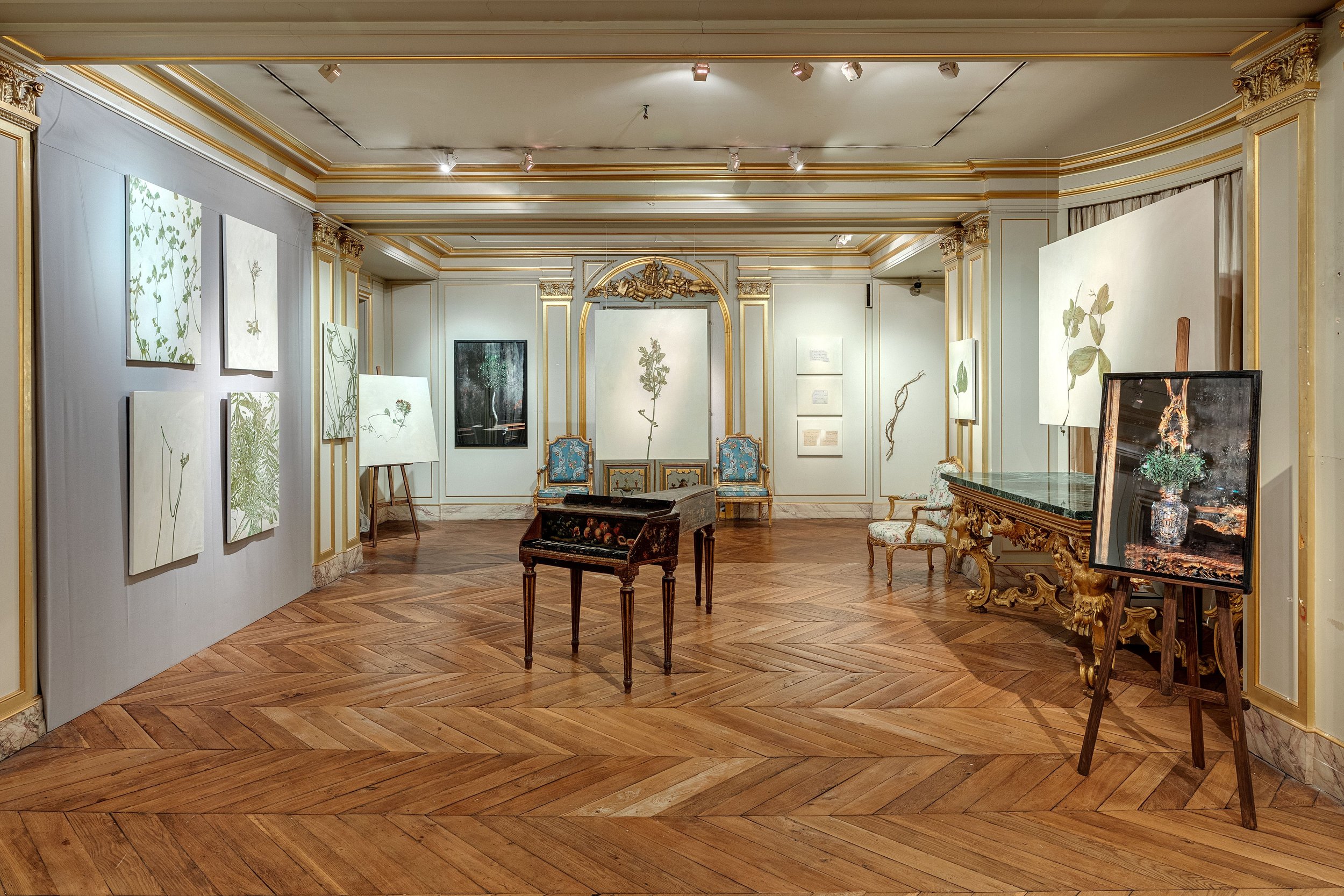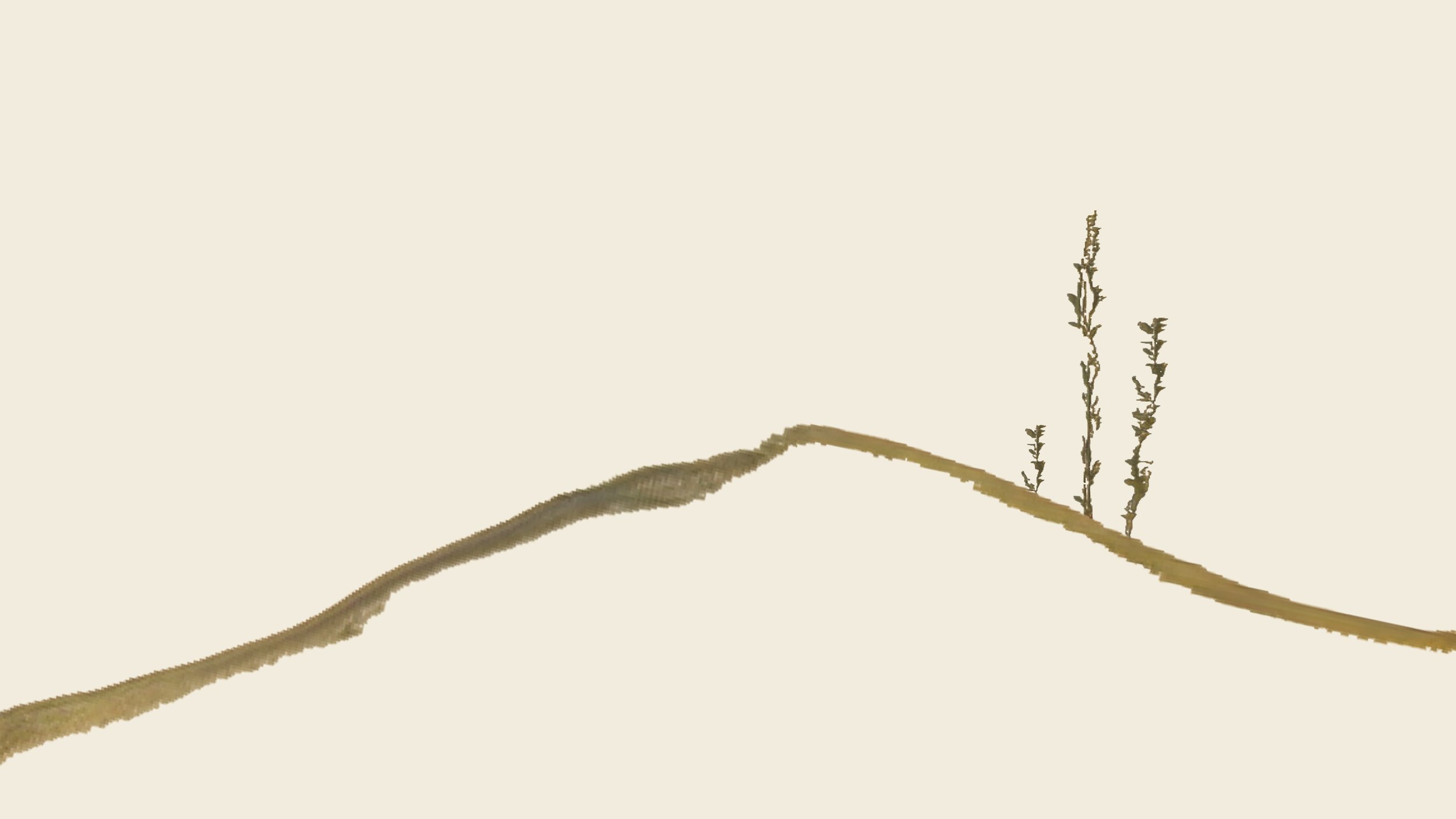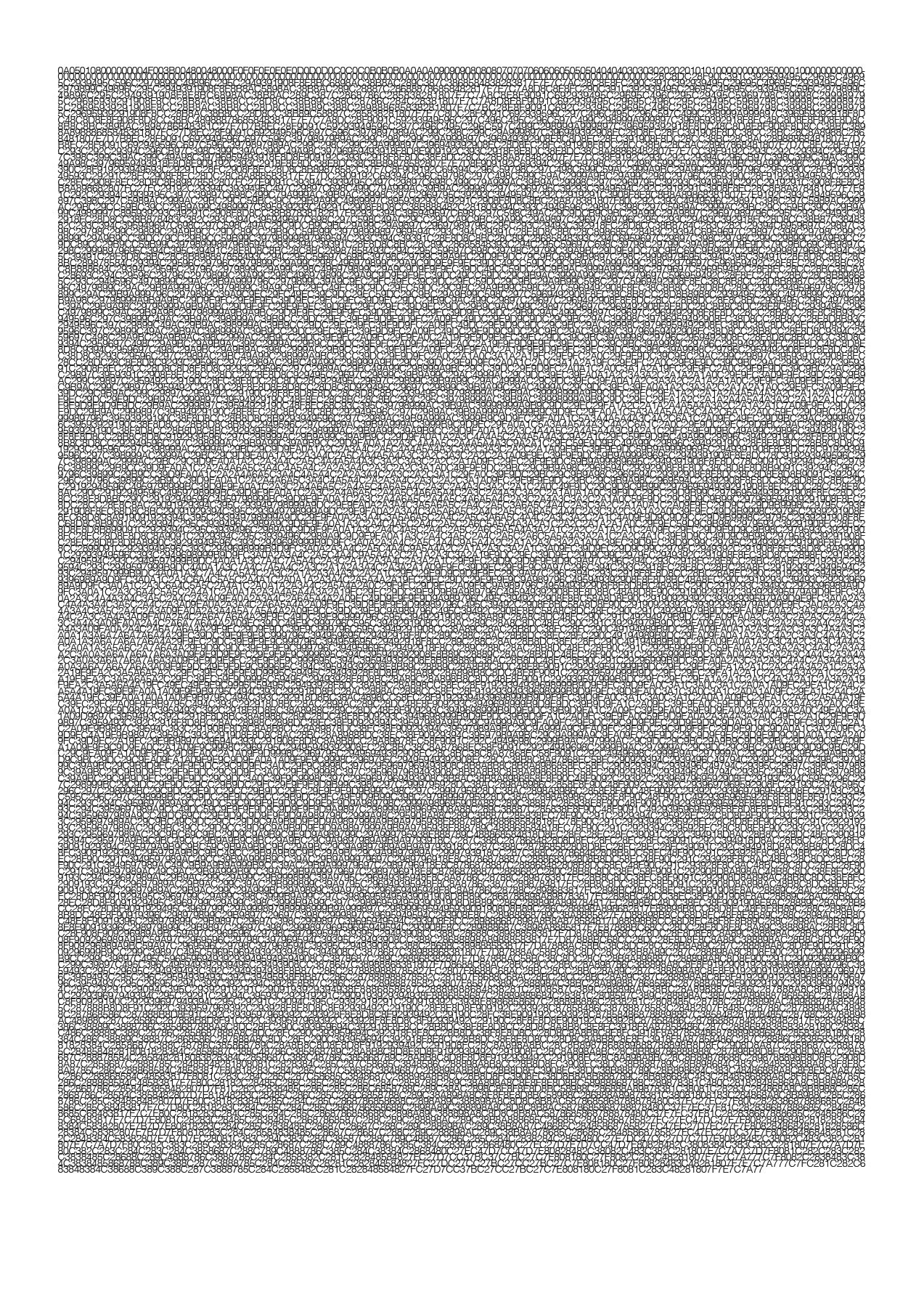Techno Terrain: Nature in the Age of the Metaverse
The exhibition takes visitors on a journey through a mesmerizing fusion of AI-driven digital art, nostalgia-infused landscapes, and the limitless possibilities of the metaverse.
‘SHUNDO ODDISH’ by Skye Nicolas and ‘what was found in the mountain (no wind here can uproot)’ by Aurece Vettier at the Expanded Art show in Berlin
On August 30th our curator Kika Nicolela and Anika Meier from Expanded Art hosted a Twitter space to introduce the international group exhibition TECHNO TERRAIN: NATURE IN THE AGE OF THE METAVERSE in collaboration with objkt.one. Here are the key highlights.
TECHNO TERRAIN is an invitation to contemplate the intersection of nature and technology. Through captivating artworks by 16 artists, it reimagines our connection to the natural world, challenging conventional perceptions and delving into the depths of our collective nostalgia.
You can see the pieces and read the full curatorial text on: https://objkt.one/explore/curations/techno-terrain-31-08-23. For interview of the artists by Expanded Art, you can click here.
‘Controlled Burn’ by Rick Silva and ‘Afterlives, III’ at the Expanded Art show in Berlin
The show was curated by Anika Meier for Expanded Art and was in view from the 29th of August until the 9th of September in their gallery in Berlin. Our curator Kika Nicolela was personally at the exhibition on Friday September 1st for a conversation with Anika Meier and Benjamin Heidersberger from the Institut Heidersberger.
The idea of the exhibition was to bring together various generations of artists: the pioneers and the new masters. It's particularly captivating to witness the juxtaposition of Qubibi’s artwork displayed alongside Hans Dehlinger's piece, all framed with custom-made frames by Hans Dehlinger himself.
‘tree_16_on_blue’ by Hans Dehlinger next to ‘wn10R8tl723Cb’ by Qubibi
Several artists were present during the Twitter space to talk about their pieces.
Skye Nicolas
‘SHUNDO ODDISH REDUX’ by Skye Nicolas for objkt.one
Skye Nicolas is an artist who investigates the role of memory in the post-internet age through intimate conversation and hidden dialogue, in which nostalgia plays a vital ingredient in defining a recognizable visual language and signature style.
He started by mentioning his prior exploration of nature within his work, SOMEWHERE OVER THE RAINBOW, SKIES ARE BLUE that he did for the Francisco Carolinum Linz museum.
‘SOMEWHERE OVER THE RAINBOW, SKIES ARE BLUE’ by Skye Nicolas, in the permanent collection of the Francisco Carolinum Linz museum
When Anika proposed an exhibition exploring these themes, Skye was thrilled. He saw it as the perfect opportunity to showcase the two pieces that he felt were a perfect fit for the show: ‘SHUNDO ODDISH’ and ‘SHUNDO ODDISH REDUX’.
‘Shundo’ refers to a rare Pokémon. For those who may not be acquainted with Pokémon Go, this augmented reality (AR) game, which burst onto the scene in 2016 as a global sensation, encourages players to venture outdoors and explore the real world:
“You see the world through the game. You look for these pokemons, it’s like a treasure hunt.”
During the years of the Pokémon Go craze, Skye went by the character name VICIOUSYOUTH and became an active member of a global Pokémon Go community.
“I managed to have in my collection the Shundo which is a combination of “shiny” and “hundo”. This is an impossibly rare pokemon. Many people haven’t even seen a Shundo.”
In the piece he is contemplating the significance we attach to these digital assets:
“This speaks about this growing phenomenon of parasocial relationships; we are actually forming bonds with these digital entities.”
From a fine art perspective, his inspiration draws from the Greek artist Jannis Kounellis, who in 1969 sought to break free from the confines of flat paintings:
"He wanted to create a situation in which he wanted to be physically part of the painting.”
This concept found expression in his work titled "Untitled/12 horses," which is fairly self-explanatory. Kounellis actually introduced twelve live horses into the exhibition space, marking one of the earliest documented instances of art involving live creatures.
‘Untitled/12 horses’, installation view at Galleria L’attico, Rome, 1969. Artwork © Jannis Kounellis
Fast forward to today's context, we're delving into the metaverse, where live beings can take on various forms, “whether you become an avatar or you are interacting with other entities that you think are live in the metaverse”. Skye found it fitting to illustrate this concept by showcasing an incredibly enigmatic creature and its natural habitats.
Still image from ‘SHUNDO ODDISH’ by Skye Nicolas for objkt.one
Skye placed the creature within an idyllic Japanese garden setting. “In this case I was thinking of the 16th century yokai painting which featured these mythical monsters which is where Pokemon comes from and is very inherently imbedded in Japanese culture.”
“Just meditating on how this post modern technologies influence our thinking, our way of processing information and how we are interfacing with the world and how we are creating new values for this digital economy”.
Skye Nicolas's second artwork, titled ‘SHUNDO ODDISH REDUX,' is created using emojis, employing the same distinctive style he previously used in 'Somewhere Over The Rainbow' from the Linz Museum collection. This particular piece was also influenced by Anika's suggestion.
Margaret Murphy
‘Desert Views’ by Margaret Murphy for objkt.one
Margaret Murphy is known for her work as a feminist and social media artist, with a focus on self-portraits. Last year, she ventured into the realm of artificial intelligence, expanding her artistic horizons significantly. She now combines her background in photography with AI.
For this series, Anika and Margaret had a discussion about the scarcity of black and white AI-generated art. This conversation sparked her curiosity about the specific historical canon of mid-century American male artists. These artists, including Ansel Adams, Robert Adams, and Stephen Shore, held a unique and defining role in shaping the perception of photography for many.
These photographers had a distinct and signature approach to capturing the United States. “I think many of what is so compelling about their photography is that it captured a moment in time just before a lot of great technological changes occurred”. Robert Adams, in particular, “was looking at the expansion of west and urban development taking place against the backdrop of these really vast and breathtaking natural landscapes”.
With AI, Margaret played “a combination of these iconic artists and reminaging of what they might look like in the metaverse.” “We actually might have a better understanding of our past as a human race than we do currently. I’m imagining how technology can educate us more than simply learning in the history books.”
‘Desert Views’ was an homage to a specific photograph by Robert Adams, in which he captured a silhouette of a person through someone's home window—a personal favorite of Margaret’s. “Then you have this grand vast scope of the west that’s very much Ansel Adams's”. In essence, this work brings together the qualities of both Adams and Adams.
Colorado Springs, Colorado by Robert Adams © 2023 Robert Adams, courtesy Fraenkel Gallery, San Francisco
The second piece is called “American Uncommon”.
‘American Uncommon’ by Margaret Murphy for objkt.one
“I think for me the colour aspect was important because these artists that were working in colour at this time really legitimised colour photography as a fine art medium.”
At the dawn of personal cameras, many families used colour film, but it was often considered cheap and gaudy. Margaret wanted to acknowledge this era by highlighting colour as a tool for photographers to elevate their work conceptually. Additionally, it's a nod to the fact that we don't often see buildings painted in such vibrant colours in today's world, except perhaps in places like Los Angeles.
Oona
For the artist Oona, “girls just wanna have fun”.
In her practice, she enjoys exploring the fascinating interplay between how people attribute value and their relationships with identity. The artist had been intrigued by why nature is so often associated with motherhood and femininity. It seemed natural for her to play with this iconic piece. “The way this digital realm dehumanizes the female form is also interesting.”
Connie Bakshi
Still image from ‘Subliminal Species’ by Connie Bakshi for objkt.one
Connie Bakshi's artwork, ‘Subliminal Species’, emerged from extensive research and exploration into the roots of her Taiwanese heritage. Her family's history traces back to people whose original stories have been obscured over generations due to colonial practices. As she contemplated her approach to the exhibition, the concept of silenced narratives and memory resonated deeply with her.
The creation process leans on a recursive digital dialogue to negotiate the territories of influence between an obscured source and the imposition of a dominant code:
“I played on AI recursion in repetition to negotiate this train of influence between small data and this imposed dominant code with the generation of each and every frame. For me each time a frame is generated is actually this moment when this dynamic plays out and in which identity formation is contested. The full animation follows this fractionalised piece of DNA that I call the digital echo of a lost species. The digital DNA and the life form ultimately take shape throughout this animation. It influences and is influenced by the landscape as it progresses through its journey. The final portion of the animation generates this form that is suggestive of a sacramental urn.”
“As I was generating these images this one came as a bit of a surprise. It was a thematic element of the initial dataset that I seeded that had nothing to do with the text prompt. The sacred vessel is central to the one remaining ritual of the aboriginal tribe and this remaining ritual has persisted in the face of continual erasure.
I will say that the resulting piece gave me the sense of optimism for the future and how silenced narratives and minoritized data can echo and reemerge through time and shape the techno terrain”.
Chris Coleman
Still image from ‘Demorphic’ by Chris Coleman for objkt.one
Chris Coleman is a Professor of Emergent Digital Practices at the University of Denver, a coder and artist. His work includes sculptures, videos, creative coding and interactive installations.
He describes his artwork for objkt.one as an exciting endeavor that perfectly realized the vision he had in his mind.
The creation process involved various aspects, and he received invaluable technical assistance from Theo Horsmeier. Chris also shared his experience from a residency he participated in northern Italy, known as the Digital Stone Residency. During this program, he visited a marble quarry where the marble for sculptures is sourced. The quarry was a paradoxical place, simultaneously terrible and noisy yet astonishingly stunning. Chris took hundreds of photographs in this environment, which he then transformed into 3D models.
"In that case, the idea that we are kicking these giant cubes of marble out of the earth, bit by bit, over hundreds of years, creating this hole in the earth was really profound to me, so I tried to make a piece that spoke about that violation."
Kalen Iwamoto
Still image from ‘Topography of Absence’ by Kalen Iwamoto for objkt.one
Kalen Iwamoto is a conceptual crypto writer and artist exploring the intersection of art and language on the blockchain. She is also notably co-founder of theVERSEverse, a literary gallery where poems are works of art.
For objkt.one, Kalen has contributed a text-based work and video piece to the exhibition. It is a minimal poem produced in collaboration with her partner, Julian Sovano.
Kalen grapples with the notion that it's challenging to conceive of any digital landscape devoid of human mediation, and simultaneously, how that human subject is interconnected with the landscape. “This piece plays with this dialectic of presence and absence both in the content of the text and in form of the visuals the shape of the digital topography was”. “I wanted to play between the materiality of text and letters.” The text takes reference to the language of maps with the you’re here point which tells the viewer your position within the map.
This piece is also inspired by Debord's notion of psychogeography, which involves mapping the urban landscape based on our psycho-emotional relationships to various places within it. Specifically, this artwork references psychogeography and its iteration in the art book "Mémoires" by Guy Debord and Asger Jorn.
Kalen enjoys the notion of "détournement" or reappropriation, which involves altering the meaning of something by taking it out of its original context and placing it in a new one. This artistic technique, popularized by Debord and the Situationists, is something Kalen frequently incorporates into their work. In this piece, she applies detournement to the language of maps.
"Topography of Absence" explores metaphysical questions in the digital realm, focusing on the place of the human subject in the intersection of nature and technology. While the text proclaims the absence of the subject, it simultaneously evokes its presence, creating a “ghostly presence of the subject within the techno terrain”.
The phrase "You are not here," depending on the reader, carries an undercurrent of longing or nostalgia, linking back to the relationship between humans and nature and the new possibilities this relationship might hold in the metaverse.
Aurece Vettier
Aurece Vettier, whose real name is Paul, introduced himself as an artist who works extensively with new technologies, including AI. He specializes in training his own models, particularly text-to-image models, which he utilizes to generate unique and uncanny shapes, sometimes even recreating his own dreams. In his artistic practice, he combines these modern technological approaches with traditional craftsmanship techniques: “I think I was among the first artist to play with bronze sculptures or oil paintings with shapes generated with AI but also a physical presence.”
Nature holds immense importance in his work, and he mentioned a work in progress titled "Potential Herbariums." This ongoing project involves a series of NFTs, bronze sculptures, and oil paintings derived from a GAN (Generative Adversarial Network) that he trained in 2019 using a vast dataset of four million herbarium shapes. The shapes generated by this GAN defy conventional natural forms, almost appearing anti-Darwinian and impossible.
‘Potential Herbariums’ by Aurèce Vettier (Photo : Romain Darnaud)
"When I encountered these shapes, I was very moved because I believed that they would be exactly the shapes nature would take if nature wanted to commit suicide, which is, in a way, sometimes what's happening when we don't leave enough space for nature to grow."
Aurece's perspective as an artist revolves around the belief that we have reached a point where merely denouncing or discussing environmental issues is insufficient. While acknowledging the myriad problems in how we treat nature and each other, he posits that artists, especially after the Venice Biennale in 2019, are already aware of these problems. In his view, now is the time for artists to propose potential futures.
what was found in the mountain (no wind here can uproot) by Aurèce Vettier for objkt.one
"What I want to do in the way I sell is, in the future, reinvest more money into repairing ecosystems or helping nature grow back in areas, and maybe use what I can earn from the digital space to repair the real world. Of course, it's a big objective. But I'm sure we can change the world little by little."
Claudia Hart
Still image from the 3D animation ‘A Digital Death (short but sweet)’ by Claudia Hart for objkt.one
Claudia Hart is an artist who emerged as part of a generation of 90s intermedia artists examining issues of identity and representation. She was an early adopter of virtual imaging, using 3D animation to make media installations and projections, and later as they were invented, other forms of VR, AR and objects produced by computer-driven production machines.
Claudia Hart introduced her piece by explaining her own perspective on nature. When she began working with VR and 3D technology roughly 25 years ago, there were no instructions or tutorials available. She became captivated by the complexity of the software and the narratives she could create or uncover within it.
"What I loved about it was that it was a model, a parallel structure to the natural world, but it was invented by human and comes out of human knowledge or accumulated knowledge. I continued to explore this 3D space as an intellectual model of the natural world."
The particular piece she discussed was created about ten years ago, and she also made a mini version of it for the project. During her work, she stumbled upon a glitch, which she found symbolic. In her 3D animation software, renowned as one of the most complicated ever made, she discovered that it was possible to create organic plant forms that couldn't be killed—they wouldn't wilt. However, Claudia figured out a way to "ungrow" them, effectively causing them to disintegrate into dust that floated away.
“If I ungrew them, I could kill them.” "I loved that because it was a parallel construction to my experience of technologies in general, which is that they don't work. They're always blowing up and in my face, and nothing happens the way I expected it to.
I found that it was this amazing parallel that the technological space of nature dies or goes into a fall by glitching out and breaking down."
Jurgen Ostarhild
‘Himmel, Berlin 2014. (hexcode of a grey Berlin sky) 9000x6364px’ by Jurgen Ostarhild for objkt.one
Jurgen Ostarhild is a Berlin-based visual artist and photographer who uses light and code as his canvas. He introduced his piece called ‘Himmel’ in which the constellations of letters are similar to the gray Berlin sky.
Anika Meier interviewed the artist for Expanded Art, you can read the interview here.
Hans Dehlinger
‘tree_16_on_blue’ by Hans Dehlinger for objkt.one
‘tree_16_on_pink’ by Hans Dehlinger for objkt.one
Hans Dehlinger began working with programming languages and computers in the early 1960s during his studies in architecture. In the early 1980s, he began to explore computers artistically, with a focus on algorithmically generated line drawings. The majority of his generative artwork is based on procedures and computer code executed on pen plotters. It thus has aspects of both electronic and physical art. The lines can form delicate structures, dense textures, or even evoke an “unsharp” impression from sharp lines.
He created two artworks for objkt.one: "YELLOW SHARE TREE_16_ON_BLUE" and "PINK".
Yellow Tree was based on the idea of creating an entire drawing with just a small area from which all lines would emerge.
“The yellow tree is a 2001 piece.
The question was, "Can you make an entire drawing out of a very small area, using a number of points from which polygons and lines develop?"
There is a root area with about 200 points thrown into this small space, and the polygons and lines develop with random generators. They are then clipped within the frame of the picture. Everything outside the picture's size is clipped off, so this tree appears to be standing on a blue background. From the root, there is a line going to every distant point of the tree. This is symbolized by these polygon lines. It's a very simple idea but with very strict restrictions.”
Dev Harlan
Still image from ‘Afterlives, III’ by Dev Harlan for objkt.one
Dev Harlan's work explores the themes of nostalgia and techno-futurism. His piece touches upon the histories of technologies and examines the entire life cycle of technology as a material entity.
The series titled "After Lives" explores how technology starts as a raw material, requiring environmentally harmful extraction processes for its production, and then often ends up discarded after a short period of use. In a longer geological perspective, technology becomes part of the Earth's strata. Harlan's work juxtaposes technology with minerals, rocks, and boulders, illustrating the complete lifespan of these often short-lived gadgets.
Dev Harlan, Found Boulder, Palisades 1, Digital Render, 2021.
Harlan's creative process heavily relies on photogrammetry, similar to Chris Coleman's work, to capture scans of interesting sites and objects.
“I bring all of these things into a virtual space where they interact with each other in an imaginary way, but they are still referencing a real thing.” This is why he is fascinated by photogrammetry as a process because it maintains a connection to the tangible world, allowing for a richer relationship between these elements:
“You can make algorithmically generated rocks but I think nature is more interesting. It also documents my own experience with the space. When I’m working with objects in the studio, this is a record of my actions as an artist.”
Heinrich Heidersberger
‘09065_001 Schneesternchen’ by Heinrich Heidersberger
Benjamin Heidersberger, Director of the Estate Heinrich Heidersberger, and the son of Heinrich Heidersberger, came to talk about the piece. Benjamin's father created a remarkable piece in the 1950s, featuring a snowflake. In the history of snowflake photography, there's the famous Wilson Bentley, who photographed about 5000 snowflakes a century ago, all displaying the same hexagonal structure inherent to water molecules.
Similarly, Benjamin's father, during the 1950s, photographed snowflakes before they melted, capturing around 50 different snowflakes in various shapes and forms. One of these unique snowflakes is on display.
Born in 1906 and passing away in 2006, Benjamin's father initially studied architecture. He later went to Paris in 1928, where he studied with Léger for a couple of years. Upon returning to Germany, he embarked on a successful career as an architectural photographer. At the age of 90, he decided to sell his work, and Benjamin acquired all of it. In the 1960s, he was invited to Wolfsburg, where he had his studio in a beautiful castle alongside other artists. He resided there until his passing in 2006.
We express our sincere gratitude to Expanded Art for this wonderful collaboration and beautiful exhibition. We were absolutely thrilled to see these wonderful pieces receive the recognition they truly deserve!
‘A Digital Death’ by Claudia Hart, ‘tree_16_on_pink’ by Hans Dehlinger and ‘wn10R8tl723Cb’ by Qubibi at the Expanded Art show in Berlin
About objkt.one
Objkt.one’s curatorial approach is anchored in the long-term commitment to explore and express diverse cultural and artistic backgrounds while putting the value behind each work of art at the forefront. The drops are curated by us as well as by external curators. The onboarding process for curators consists of filling out an application form, which is currently limited to single drops/events. You can find the form here.
About Expanded Art
EXPANDED.ART turns Web3 inside out and expands the notion of a gallery and an online marketplace by being both. The focus is on the history of digital art and on supporting female and non-binary artists. You can learn more here.





